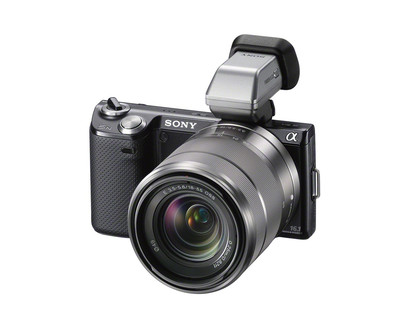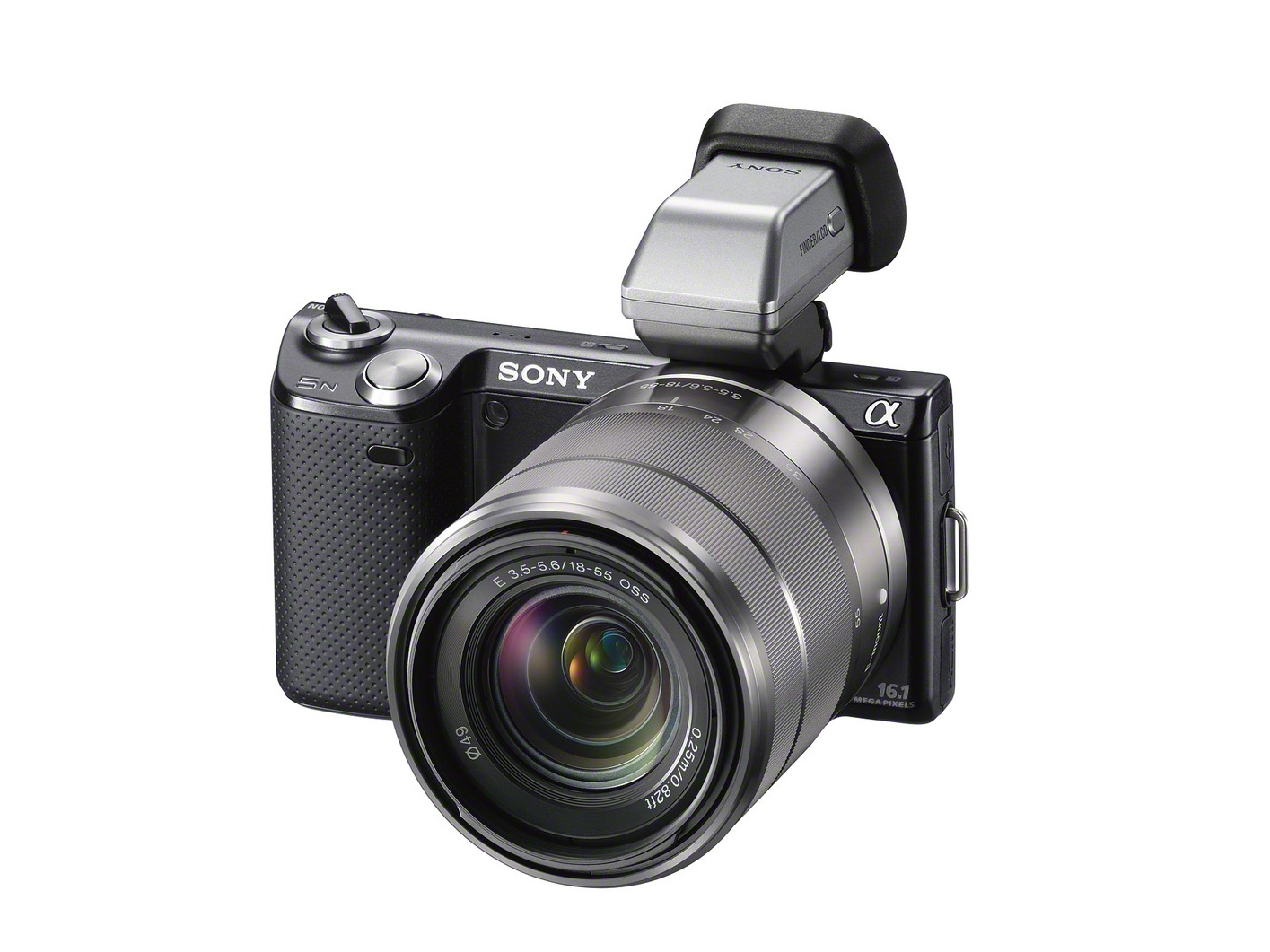Why you can trust TechRadar

When it comes to the business of taking photos with the Sony NEX-5N, to the right of the top plate, where a shutter release button might usually be, is the chunky on/off switch. The shutter release button is instead located on the forward slope of the handgrip and slightly to the left.
Flick the Sony NEX-5N on and the camera readies itself for action in just over a second, so a smidgeon slower than a DSLR, with the LCD fading into life. Squeeze down halfway on the shutter release and the camera's auto focus does its stuff, the back screen display momentarily softening before snapping back into focus, AF points highlighted in green with a beep to confirm that the user is able to press down fully to take the shot.
To us it doesn't feel as fast as the AF systems of the Olympus PEN or Panasonic G series, including the Panasonic Lumix DMC-GF3, which claim the world's fastest AF and again use contrast detection AF, but it's still plenty fast enough on a single shot basis.
In terms of exposure, and metering too, we were impressed, with burnt out highlights a rarity - indeed the camera tends to underexpose if anything, to preserve detail, and using Curves in Photoshop we were able to drag an impressive degree of shadow detail back.
The result was that we maintained both foreground and background detail in the same shot, so achieved an image closer to what our eyes were seeing at the time, which is arguably all anyone wants from a consumer-level camera. The bundled lens is up to the task, in that we were able to achieve sharp results handheld at maximum telephoto as well as maintain edge-to-edge sharpness at maximum wideangle. The usual Sony bugbear of pixel fringing was refreshingly absent here.
The well-saturated colours synonymous with the Sony range are in evidence when examining JPEG photos straight from the camera. White balance was only ever an issue when shooting in lower light, and at higher ISOs, and noise only really starts becoming an issue above ISO 6400.
At ISO 12800 we're seeing softening of edge detail and more grain in the shadows, while at maximum whack ISO 25600 we're getting a gritty appearance across the entire frame. But, ironically, this helps to maintain an impression of edge sharpness. You're best off sticking to ISO 6400, however, unless particularly pushed.
Whether shooting raw or JPEG, the results from the Sony NEX-5N and lens combo are sharp and detailed, and most photographers will be more than happy sticking with JPEGs for day to day shooting.
Incidentally, power is good for up to 410 shots from a full charge, according to CIPA testing. So that's a positive improvement on the 330 shots of its forebear, and an exact match for the performance of the new Nikon V1 competitor. But the Sony NEX-5N offers twice the longevity of the cheaper Nikon J1, which is a more exact price match.
Current page: Performance
Prev Page Build quality and handling Next Page Image quality and resolution
When not wrestling wild bears or leaping tall buildings in a single bound, Gavin Stoker can be found editing British Photographic Industry News, the UK's longest running and only photo trade title. He has over 25 years of camera testing and reviewing under his belt.
